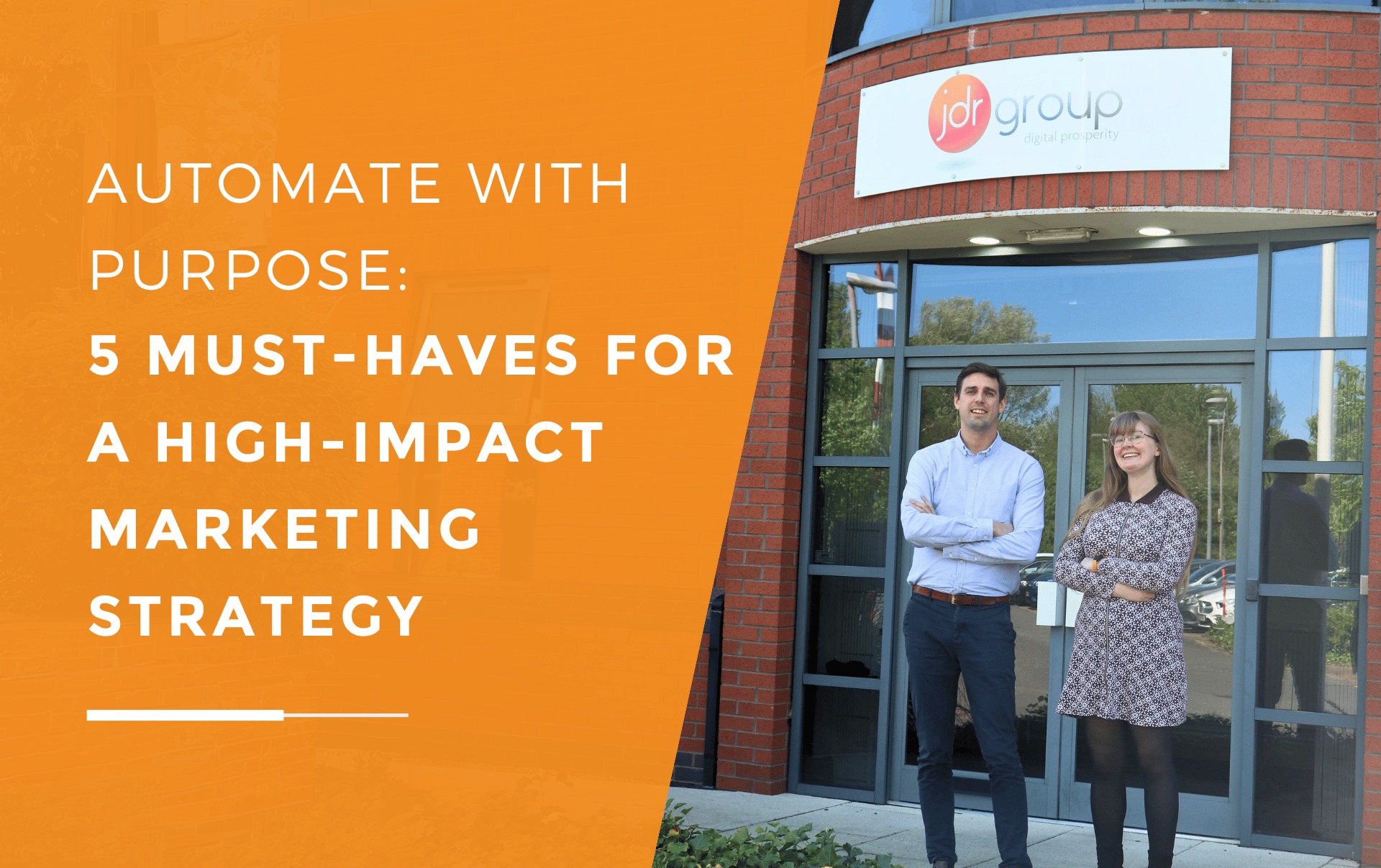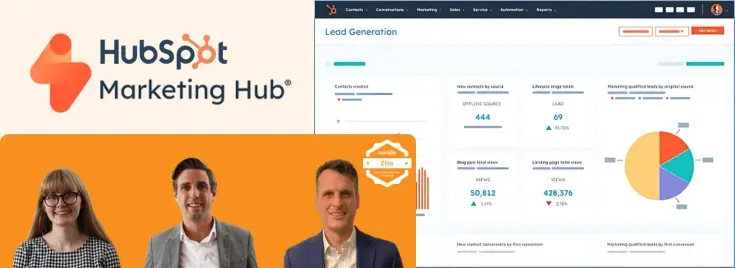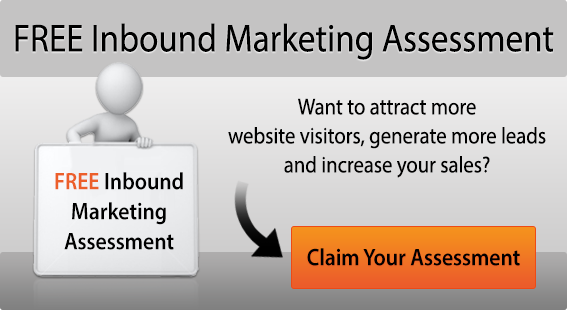Achieving Your Business Ambitions In 2024 With Customised Inbound Marketing Solutions
by Will Williamson on 01-Feb-2024 15:13:00
.jpg?width=867&height=562&name=Achieving-Your-Business-Ambitions-In-2024-With-Customised-Inbound-Marketing-Solutions%20(2).jpg)
Customised inbound marketing solutions are tailor-made digital strategies designed to attract a specific subset of potential customers to your business, thereby increasing conversions and maximising ROI. Put simply, a customised inbound marketing strategy delivers ‘the most bang for every buck spent’ out of all the digital sales approaches currently available. The goal is to engage your audience in a non-disruptive way and build a relationship with them by providing them with timely answers to their search queries, thereby nurturing them into customers over time.
The success of this approach is founded on data and is focused on driving traffic, generating leads, and closing sales, and what makes the approach ‘customised’ is the emphasis on personalisation at every level of your marketing strategy.
Personalisation in inbound marketing
Modern inbound marketing is founded on data, and the reason that this is important is that data is the key to personalising your messages and content for maximum relevance and resonance with your target market. The secret to successful personalisation is to intelligently use the data you have about your customers to genuinely understand their individual preferences and needs – if done right, this strategy can significantly enhance the effectiveness of your inbound marketing efforts by making your content more engaging for your buyers.
1. Content personalisation
Content personalisation, or customisation, uses customer insights to deliver more individually relevant content to each user, drawing on information about user preferences, browsing history, and past interactions with your business to create content that speaks directly to each prospect. This content can take the form of blog articles, downloadable e-books, videos, or other types of content. Dynamic marketing tools, such as HubSpot's CMS Hub, can help you tailor content to individual customer profiles and tastes, and publish it in the right way to gain maximum visibility and impact.
2. Email personalisation
Personalisation is the key to success in email marketing, and involves (at minimum) making use of the customer’s name, information about their past purchase history or interactions, and other behavioural data to make your email communications feel more personal and relevant. This maximises your open rate and encourages engagement with your emails, preventing them from coming across as ‘spammy’. Advanced automation tools are now available to segment your email lists based on behavioural or demographic information, or the users’ stage in your buyer journey, allowing you to create highly targeted messages. For example, you might send different emails to prospects who have abandoned their shopping cart than to customers who have recently made a purchase.
3. Website personalisation
Website personalisation, or responsive design, refers to dynamically altering the content or design of a website (from the perspective of the user) based on the individual’s source/location, browser, behaviour, device type, or other factors. This can be as simple as displaying a different home page banner to returning visitors, or as complex as showing different product recommendations based on past purchases, or region-specific content based on the visitor’s country of origin (based on IP address – this only works if the visitor isn’t using a VPN).
4. Advert personalisation
Personalising your adverts requires you to customise the content and placement of digital adverts and landing pages based on user data. Most PPC platforms now include a wide range of sophisticated customisation features, such as Facebook’s Custom Audiences feature, that lets you show ads specifically to people who have visited your website in the past, and the Google Ads demographic targeting feature that lets you display different adverts to different age groups within your campaign.
5. Customer/buyer journey personalisation
The most sophisticated and potentially the most valuable element of customised inbound marketing is personalising the buyer journey itself. To do this, you need to accurately map out the different stages that a typical customer goes through in your sales cycle, from first learning about your brand to making a purchase, and tailor your interactions at each stage. This might, for example, involve sending different email content to users at different stages of the journey, or offering personalised discounts or incentives to prospects based on past interactions, or the pages they have visited on your website. A good CRM (Customer Relationship Management) system can be used to track a customer’s journey and facilitate high levels of personalisation, recording all marketing touch points within a single ‘source of truth’.
Find out more
As inbound marketing and content development specialists, we can help you tailor your entire marketing strategy to the specific needs and purchase motivations of your customers, maximising uptake and conversions. To find out more about how to get stronger results from marketing and a better ROI in 2024, contact JDR today by clicking here.
Image Source: Canva
- Inbound Marketing (SEO, PPC, Social Media, Video) (824)
- Strategy (363)
- Sales & CRM (195)
- Marketing Automation & Email Marketing (190)
- Business Growth (164)
- Website Design (160)
- Hubspot (138)
- Lead Generation (115)
- Google Adwords (98)
- Content Marketing (94)
- Conversion (48)
- Case Studies (47)
- News (47)
- Ecommerce (39)
- Webinars (34)
- SEO (24)
- AI (20)
- Events (19)
- Video (17)
- LinkedIn Advertising (15)
- Video Selling (15)
- Software training (13)
- Niche business marketing (11)
- The Digital Prosperity Podcast (10)
- Facebook Advertising (6)
- HubSpot Case Studies (5)
- December 2025 (10)
- November 2025 (6)
- October 2025 (17)
- September 2025 (16)
- August 2025 (14)
- July 2025 (14)
- June 2025 (5)
- May 2025 (19)
- April 2025 (15)
- March 2025 (13)
- February 2025 (13)
- January 2025 (8)
- December 2024 (2)
- November 2024 (4)
- October 2024 (21)
- September 2024 (4)
- August 2024 (8)
- July 2024 (14)
- June 2024 (16)
- May 2024 (25)
- April 2024 (15)
- March 2024 (18)
- February 2024 (5)
- January 2024 (10)
- December 2023 (6)
- November 2023 (10)
- October 2023 (13)
- September 2023 (12)
- August 2023 (14)
- July 2023 (13)
- June 2023 (14)
- May 2023 (15)
- April 2023 (13)
- March 2023 (14)
- February 2023 (13)
- January 2023 (15)
- December 2022 (13)
- November 2022 (6)
- October 2022 (8)
- September 2022 (22)
- August 2022 (15)
- July 2022 (13)
- June 2022 (16)
- May 2022 (14)
- April 2022 (16)
- March 2022 (17)
- February 2022 (11)
- January 2022 (8)
- December 2021 (6)
- November 2021 (7)
- October 2021 (11)
- September 2021 (10)
- August 2021 (7)
- July 2021 (7)
- June 2021 (4)
- May 2021 (4)
- April 2021 (1)
- March 2021 (3)
- February 2021 (5)
- January 2021 (4)
- December 2020 (7)
- November 2020 (6)
- October 2020 (5)
- September 2020 (9)
- August 2020 (18)
- July 2020 (17)
- June 2020 (17)
- May 2020 (10)
- April 2020 (21)
- March 2020 (24)
- February 2020 (21)
- January 2020 (12)
- December 2019 (23)
- November 2019 (12)
- October 2019 (14)
- September 2019 (16)
- August 2019 (15)
- July 2019 (13)
- June 2019 (6)
- May 2019 (8)
- April 2019 (4)
- March 2019 (2)
- February 2019 (2)
- January 2019 (2)
- December 2018 (3)
- November 2018 (24)
- September 2018 (11)
- August 2018 (9)
- June 2018 (3)
- May 2018 (6)
- April 2018 (14)
- March 2018 (12)
- February 2018 (16)
- January 2018 (15)
- December 2017 (15)
- November 2017 (18)
- October 2017 (23)
- September 2017 (19)
- August 2017 (28)
- July 2017 (27)
- June 2017 (25)
- May 2017 (18)
- April 2017 (17)
- March 2017 (16)
- February 2017 (17)
- January 2017 (14)
- December 2016 (21)
- November 2016 (27)
- October 2016 (25)
- September 2016 (16)
- August 2016 (20)
- July 2016 (19)
- June 2016 (14)
- May 2016 (20)
- April 2016 (24)
- March 2016 (22)
- February 2016 (28)
- January 2016 (27)
- December 2015 (28)
- November 2015 (19)
- October 2015 (9)
- September 2015 (12)
- August 2015 (5)
- July 2015 (1)
- June 2015 (10)
- May 2015 (3)
- April 2015 (11)
- March 2015 (14)
- February 2015 (15)
- January 2015 (12)
- December 2014 (2)
- November 2014 (23)
- October 2014 (2)
- September 2014 (2)
- August 2014 (2)
- July 2014 (2)
- June 2014 (7)
- May 2014 (14)
- April 2014 (14)
- March 2014 (7)
- February 2014 (2)
- January 2014 (7)
- December 2013 (9)
- November 2013 (14)
- October 2013 (17)
- September 2013 (3)
- August 2013 (6)
- July 2013 (8)
- June 2013 (4)
- May 2013 (3)
- April 2013 (6)
- March 2013 (6)
- February 2013 (7)
- January 2013 (5)
- December 2012 (3)
- November 2012 (2)
- September 2012 (1)
Subscribe by email
You May Also Like
These Related Blogs

Creating An Effective Marketing Automation Strategy: 5 Success Tips
Marketing automation is the process of delegating certain manual processes used in marketing and sales to a purpose-designed software platform. These …

Maximise Your SME's Potential: 4 Essential Sales Tips For UK Businesses
The UK is a nation of small businesses, with around 5.5 million SMEs registered in the UK in 2023, making up 99.9% of all private sector companies.

Replay: Drive Growth With HubSpot Marketing Hub (Professional)
Drive Growth With HubSpot Marketing Hub (Professional) - JDR Business Growth Webinar Series Join Andy Gibbins, Emma Ablewhite and Andrew Leamon from t …




